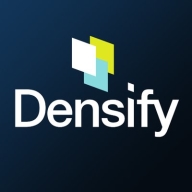

IBM Turbonomic and Densify both operate in the application resource management solutions market. IBM Turbonomic is often favored for cost-effectiveness and client support, while Densify is recognized for its advanced analytics capabilities.
Features: IBM Turbonomic offers real-time resource management, automating resource allocation decisions to ensure optimal performance, reducing manual intervention. Its automation capabilities allow for seamless application support. Densify provides predictive analytics that assist with anticipating future resource requirements, focusing on detailed data insights and proactive resource management. Advanced planning tools enable scenario testing and virtualization efficiency enhancement.
Room for Improvement: IBM Turbonomic could enhance its analytics depth to match Densify's data-focused approach and expand customizable reporting tools. Improving scalability for larger enterprises is also an area of opportunity. Conversely, Densify might benefit from speeding up deployment processes and streamlining its user interface. Better integration with third-party applications and more straightforward initial setup procedures could improve user accessibility.
Ease of Deployment and Customer Service: IBM Turbonomic supports rapid integration with existing systems and provides flexible customer support aligned with business requirements. Its deployment model focuses on ease of use and fast service adoption. Densify offers a comprehensive deployment strategy that emphasizes customizable solutions and continuous support, suitable for businesses with complex needs that prioritize customization over speed.
Pricing and ROI: IBM Turbonomic generally offers competitive setup costs, leading to a quicker ROI by minimizing resource waste and enhancing application performance promptly. Densify may involve higher initial expenses, justified by its detailed analytics providing long-term cost efficiency through sustained performance enhancements and strategic resource management. Companies seeking immediate cost savings might opt for Turbonomic, while those desiring robust data analysis for long-term gain might prefer Densify.
| Product | Market Share (%) |
|---|---|
| IBM Turbonomic | 9.8% |
| Densify | 2.0% |
| Other | 88.2% |


| Company Size | Count |
|---|---|
| Small Business | 1 |
| Midsize Enterprise | 1 |
| Large Enterprise | 9 |
| Company Size | Count |
|---|---|
| Small Business | 41 |
| Midsize Enterprise | 57 |
| Large Enterprise | 147 |
Densify is a hybrid cloud and container resource management platform that makes workloads self-aware of their precise resource requirements and automates the resource management and selection process. This solution helps you control your cloud spend and also helps your apps perform and scale better. Densify enables you to match your cloud requirements with the optimal cloud supply. Additionally, Densify is the only technology that leverages patented, predictive machine learning-powered analytics to perform advanced modeling of workload patterns, and provide precise optimization directives. It is ideal for cloud engineers, container platform owners, and IT finance.
Densify works by:
Densify Features
Densify has many valuable key features. Some of the most useful ones include:
Densify Benefits
There are many benefits to implementing Densify. Some of the biggest advantages the solution offers include:
IBM Turbonomic offers automation, planning, and right-sizing recommendations to streamline resource management, improve efficiencies, and optimize costs across virtualized environments and cloud platforms.
IBM Turbonomic is valued for its capability to optimize resource allocation and monitor virtual environments efficiently. It facilitates automated decision-making in VM sizing, load balancing, and cost optimization for both on-premises and cloud deployments. Users can leverage insights for workload placement, ensure peak performance assurance, and effectively right-size across VMware and Azure. The ongoing transition to HTML5 aims to improve visual and navigational ease, while expanded reporting features are anticipated. Opportunities for improved training, documentation, and integrations enhance platform usability and functionality.
What Are the Key Features?In finance, IBM Turbonomic aids in maintaining platform efficiency during market fluctuations. Healthcare organizations leverage its capability for resource optimization during high-demand periods to enhance patient care support. Retailers use it for planning in peak seasons, ensuring resources align with fluctuating demand to maintain performance continuity.
We monitor all Cloud Cost Management reviews to prevent fraudulent reviews and keep review quality high. We do not post reviews by company employees or direct competitors. We validate each review for authenticity via cross-reference with LinkedIn, and personal follow-up with the reviewer when necessary.